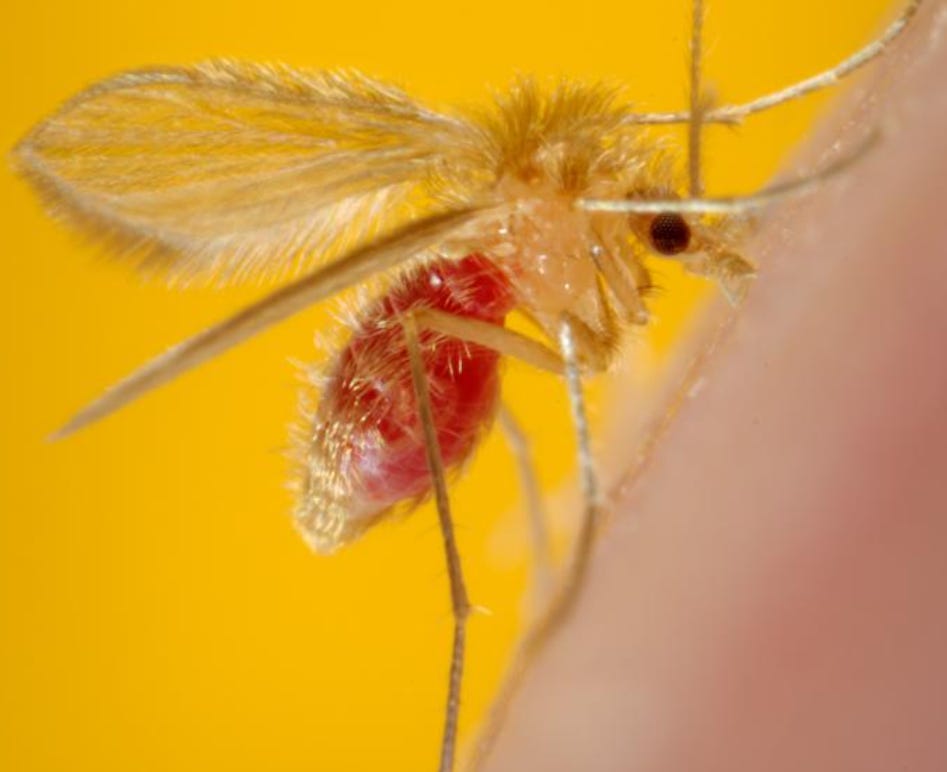Cutaneous leishmaniasis
Through June 14, 2,903 cases of cutaneous leishmaniasis have been reported in Colombia. The national incidence of cutaneous leishmaniasis is 29.57 per 100,000 inhabitants at risk, according to the Ministry of Health and Social Protection.
Of the total cases of cutaneous leishmaniasis, 5.0% were miners, 18.2% were farmers, and 20.2% (587) were military personnel. Military cases occurred in men aged 18 to 44 (average age 24.2 years).
Excluding military personnel, the incidence of cutaneous leishmaniasis in the general population is 23.73 cases per 100,000 inhabitants at risk— Thirteen departments exceed this figure: Boyacá (157.49), Cesar (97.30), Santander (93.17), Caldas (77.56), Caquetá (45.46), Bolívar (38.59), Antioquia (43.37), Putumayo (41.91), Guaviare (40.08), Risaralda (37.52), Tolima (28.94), Cundinamarca (27.87), and Chocó (26.52).
Mucosal leishmaniasis
Thirty-eight cases of mucosal leishmaniasis have been reported during the above period.
The average age of people with mucosal leishmaniasis is 38.1 years.
Of the 29 cases that occurred in the general population, that is, excluding military personnel, the highest percentage was men (62.1%), people affiliated with the subsidized system (69.0%), and people from rural areas (69.0%). Cases of mucosal leishmaniasis occurred in the general population in 16 departments.
The most common signs and symptoms of mucosal leishmaniasis are: mucosal ulceration (55.2%), rhinorrhea (20.7%), nasal obstruction (17.2%). The mucous membranes with the highest percentages of involvement are: nasal (65.5%), oral cavity (17.2%), and lips (10.3%).
The nine (9) cases in military personnel occurred in men. The affected mucosal tissues were nasal (4 cases), genital (4 cases), and lips (one case).
Visceral leishmaniasis
As of Epidemiological Week 24 of 2025, two (2) cases of visceral leishmaniasis have been confirmed, originating in Ovejas (Sucre) and Chalán (Sucre), respectively. The cases correspond to a five-year-old boy and a six-month-old girl. Both are members of the subsidized regime of the general social security health system; on the six-stratum scale, the socioeconomic status of the household was recorded as 1 or low-low. The two (2) cases were confirmed by indirect immunofluorescence, received treatment in Sincelejo, and are alive.
About leishmaniasis
Support this newsblog with a paid subscription or with a cup of coffee at ko-fi
Leishmaniasis is not a single disease, but a group of syndromes due to a variety of species of this parasite. They affect different populations and are related to a characteristic vector, the sandfly.
The disease can range from asymptomatic infections to those causing significant illness and death. Disease can appear on a spectrum from a single skin ulcer to destructive lesions of the face to terminal organ disease.
Leishmaniasis is found in 88 countries worldwide and is broken down between Old World and New World.
Subscribe to Outbreak News TV on YouTube
Old World leishmaniasis is primarily found in parts of Asia, East and North Africa, Southern Europe and the Middle East.
New World leishmaniasis occurs from northern Mexico to northern Argentina, with rare cases reported in parts of Texas and Oklahoma. In South America it is not found in Chile or Uruguay.
The vector for this parasite is a phlebotomine sandfly. There are a few different species implicated depending on the part of the world.
Sandflies are very small (about 1/3 the size of a mosquito) and make no noise when flying. There bites can sometimes be painless; because of these reasons, many people have no idea they were bitten.
Even one bite of a sandfly can transmit disease, so travelers on short trips can still get infected.
When the female sandfly takes a blood meal it injects the parasite into the wound. Macrophages pick up the parasite and here they multiply until the cell bursts from overcrowding. The parasite goes on to infect more macrophages.
Some of these cells get carried to organs of the body including the liver, spleen and the bone marrow.
There are several species of Leishmania that cause disease in humans. The most common are Leishmania donovani (kala-azar), L. tropica (Baghdad boil), and L. braziliensis (espundia).
To prevent sandfly bites, you should use insect repellents and clothing that covers the entire body, place wire mesh on doors and windows, and use mosquito nets.





